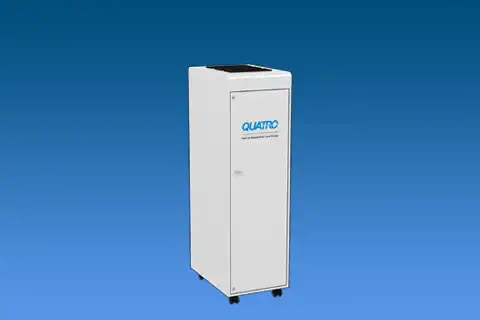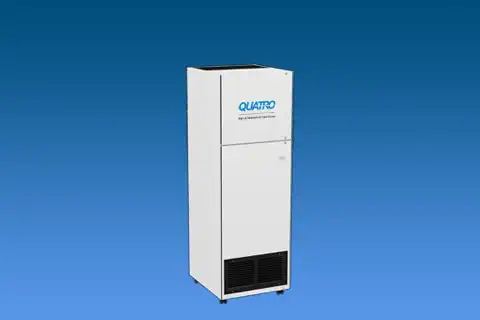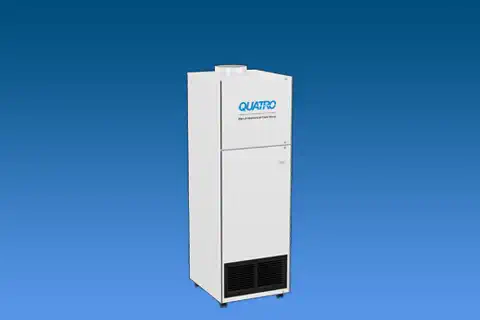Education & Schools
Overview
 Many students today suffer from the adverse effects of poor indoor air quality (IAQ) in the classroom. Studies conducted by the U.S. Environmental Protection Agency (EPA) paint a grim picture when it comes to the amount of toxins, allergens and viruses school kids are exposed to on a daily basis. While indoor air in the average household can contain five times the pollutant levels of outdoor air, it’s far worse in our schools where it can be as much as 100 times. Poor air quality puts kids at risk of developing health issues and learning difficulties.
Many students today suffer from the adverse effects of poor indoor air quality (IAQ) in the classroom. Studies conducted by the U.S. Environmental Protection Agency (EPA) paint a grim picture when it comes to the amount of toxins, allergens and viruses school kids are exposed to on a daily basis. While indoor air in the average household can contain five times the pollutant levels of outdoor air, it’s far worse in our schools where it can be as much as 100 times. Poor air quality puts kids at risk of developing health issues and learning difficulties.
A number of factors make it challenging for schools to maintain clean indoor air. Budget cuts, reduced janitorial staff, moisture infiltration and increased pollution all negatively impact the quality of air students breathe.
The situation is exacerbated by the fact that the number of students per class has risen dramatically in recent decades. The typical school now has about four times the amount of individuals as an office building of comparable size. As a result, a higher number of contaminants, viruses and bacteria builds up in the air over time. And because most school buildings are older, they lack the proper ventilation to remove these toxins, particularly in winter months when windows remain closed.
Air Quality Challenges
Factors that contribute to poor air quality in the classroom include:
- Viruses and Bacteria
- Indoor Air Pollutants
- Infiltration of Outdoor Air Pollution
- Dampness and Mold
- Allergens & Asthma Triggers
- High Carbon Dioxide Levels
Viruses and Bacteria
With a higher number of students in the classroom comes increased opportunity for viral spread. Without proper air filtration, bacteria and viruses can spread and linger indoors, sometimes for hours at a time. The result is increased infection rate and more students missing school.
The onset of the Covid pandemic has highlighted the need for better air filtration and ventilation. Schools that installed proper ventilation and HEPA filtration have noticed a dramatic drop in infection rates when compared to those that did not.
Indoor Air Pollutants
Along with germs and viruses, the presence of harmful chemicals can negatively impact indoor air quality. The off-gassing of cleaning products, carpeting and upholstery can contaminate the air. Outdated construction and insulation materials may also leak out toxins. Other sources of pollutants include:
- Art and Science Supplies
- Materials for the Vocational and Industrial Arts
- Activities of Home Economic and Physical Education Classes
Heating, ventilating and air conditioning (HVAC) equipment can also facilitate the spread of toxins if not properly maintained.
Outdoor Air Pollution
Outdoor air can seep into schools through open windows and doors. With it comes pollution such as car exhaust, carbon monoxide gas and fumes. If not adequately ventilated and filtered, those pollutants can build up in the classroom contributing to poor IAQ. The problem is exacerbated if the school is located in a city or near a highway or industrial plant.
Outdoor air pollution can wreak havoc on the health of children and adversely affect their grades. Studies have shown that schools located in areas with higher pollution levels experience lower attendance and decreased academic performance.
Dampness and Mold
Many schools are old buildings that have not been well maintained. Leaks, water damage and excessive moisture are all common problems for aging schools. Water and moisture buildup can lead to mold, dust and other airborne contaminants. Mold has spores that may contain mycotoxins, which could be poisonous. These spores can circulate throughout the school through the building’s ventilation system.
Exposure to mold has been associated with a number of health problems in children including:
- Coughing
- Wheezing
- Allergic Rhinitis
- Headache
- Dizziness
- Poor concentration
- Nose Bleeds
Respiratory illnesses such as allergic rhinitis and asthma are one of the leading causes of absenteeism each year in the United States.
Although the Occupational Safety and Health Association (OSHA) does not have standards for IAQ, it does have regulations on contaminants affecting IAQ such as mold. To prevent or remove mold in their buildings, schools can refer to the OSHA website for comprehensive guidelines.
Allergens and Asthma Triggers
Schools often have a number of indoor allergens such as pollen, dust mites and pests lurking in the air which trigger allergy or asthma symptoms such as congestion, runny nose, sneezing, wheezing and watery eyes. High pollen counts can negatively impact cognitive function and often result in poorer academic performance.
Carbon Dioxide Levels
We all need fresh air to breathe and stay healthy. The higher the carbon dioxide levels, the lower the IAQ and the more at risk school children are for adverse effects. High CO2 levels in the classroom have been linked to increased absences, sick building syndrome and respiratory issues for younger children in daycare. Elevated carbon dioxide has also been linked to poor concentration and reduced cognitive performance in kids.
According to the American Society of Heating, Refrigerating, Air-Conditioning Engineers (ASHRAE), CO2 concentrations should be lower than 1000 parts per million (ppm) to maintain good air quality. Sadly, classrooms often have CO2 levels much higher than that with the average around 2000 ppm. Some classrooms even reach peak concentrations of 6000 ppm.
In an effort to decrease CO2 in the classrooms, many schools opt for ventilation systems that only recirculate the air. While the carbon dioxide may rise, other contaminants are stirred up and brought down to breathing level. To achieve good air quality, installing a system that filters and ventilates the air is essential.
The American National Standards Institute (ANSI)/ American Society of Heating, Refrigerating and Air Conditioning Engineers (ASHRAE) have guidelines for ventilation system design for acceptable IAQ. Standards 62.1 and 62.2 outline minimum ventilation rates and other measures schools can take to curtail the adverse health effects of poor air quality.
Solutions for Schools and the Educational Sector
To protect the health and future of our children, poor air quality in the classroom needs to be addressed. Bringing ventilation rates up to code with an adequate air purifier ensures the health and wellbeing of our school kids.

AF 1000
HEPA Air Purifier
Enhanced protection against airborne pollutants including chemicals, gases, odors and particles. 600 nominal CFM.
Get Product Details
AF 2000
HEPA Air Purifier
Designed to handle high concentrations of chemicals, gases, odors, particles and biological contaminants. 1000 nominal CFM.
Get Product Details
AF 2000-IF
HEPA Air Purifier
Ducted and designed to handle high concentrations of chemicals, gases, odors, particles and biological contaminants. 1000 nominal CFM.
Get Product Details